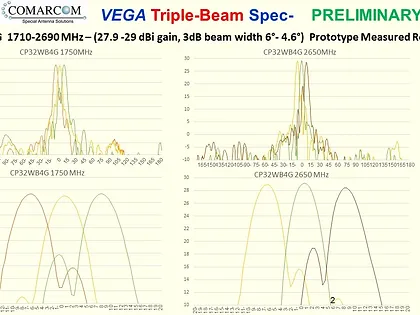SUCCESS STORIES
NEW VEGA Multi-Beam antennas - Making the most of available Tower Space
VEGA multi-beam antennas retain VEGA antennas extremely high gain advantages combined with multi-beam MIMO features that increase both the capacity and the coverage of each tower.
The new VEGA multibeam cross-polarized antennas enable the RAN P&O expert to double or triple capacity, increase coverage range, and double or triple the number of sectors per antenna while improving user experience. With a gain of up to +29dBi, VEGA very high gain narrow beam antennas are very different from common panel antennas. The same can be said about the new VEGA multi- beam antennas which are combining both very high gain and multi-beam performance. The same demand for more and faster data that is energizing the whole cellular industry applies to coverage areas such as remote communities, long sections of highways and railways and difficult terrain areas where VEGA antennas have proved to be the optimal solution. Another advantage is due to VEGA antennas exceptionally narrow beam and beam edge sharp fall-off. Spatial Carrier Aggregation multiplexing shows even better QOS as the overlapping coverage between the beams is minimal in contrary to common panel antennas.
Performance of a very narrow multi-beam antenna is even more advantageous in a rich scattering environment. It can serve several uncorrelated multipath data streams simultaneously. A dual polarized two or three beam VEGA antenna can support a fully ranked 4X4 or higher MIMO channel in such a rich scattering scenario.
VEGA multibeam MIMO antennas enable you to double or triple the number of sectors at your disposal without adding to the number of antennas you use thus neutralizing the always pressing technical and financial issue of tower space. MIMO performance is further improved by VEGA's dual polarization feature whereby each beam is made up of two cross polarized beams. Finally, the basic difference between the VEGA multibeam antennas and common multibeam panel antennas remain in VEGA's distinctly very high gain and very narrow spot beam characteristics.
A picture is worth a thousand words. Have a quick look at the antenna-range measured results of these 2m (CP) and 1m (CMP) new VEGA additions to your RAN P&O toolbox.


